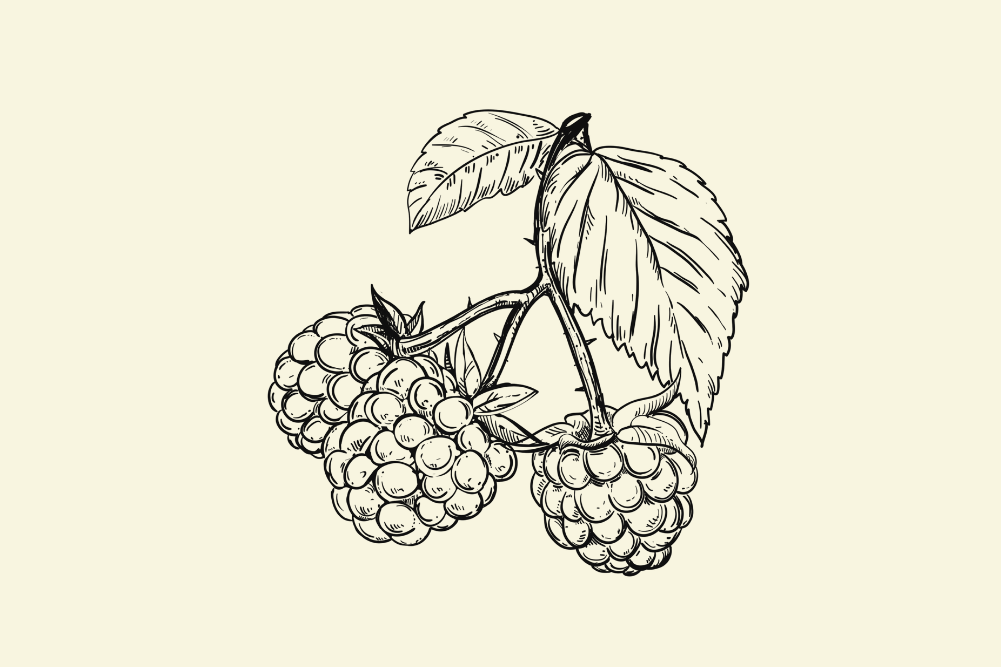Natural strategies for getting rid of hayfever
Put the tissues away, stop rubbing your eyes and say goodbye to congested nasal passages. Relief is at hand with some helpful Ayurvedic tips and yoga poses designed to stop the sniff.
Sinusitis is nothing to sneeze at. The frustration caused by irritated nasal passages can drive sufferers to distraction. Even worse, sinusitis interferes with the passage of breath in and out of our bodies, which disrupts the most fundamental source of our energy and wellbeing. You’re coughing, sneezing and continually trying to clear the airways. Your body feels tired and the ache starts deep inside your bones. You probably have a headache, too, perhaps even a fever to top it off. Your eyes are itchy and watery and to deal with this excessive discharge from eyes, nose and mouth, your closest friend is your box of tissues.
While it’s not as prevalent in Australia as it is in America, where there are approximately 38 million sufferers each year, sinusitis affects people of all ages and it’s not getting any better with time. Between 1989 and 1995, the statistics for sinusitis in Australia rose from 4 per cent to 10 per cent. In 2001, 10.5 per cent of the Australian population self-reported having chronic sinusitis.
What is sinusitis?
The sinuses consist of four pairs of air-filled cavities behind and around the nose and eyes, the purpose of which is to filter the air we breathe, preventing germs from getting into the lungs. To combat germs (such as the virus which causes the common cold), the sinus membranes swell. However, while responding to germs they can sometimes swell so much that the small openings in the cavities become blocked. Once they are blocked, mucus cannot drain properly and bacteria begin to breed inside the sinuses, causing a condition known as sinusitis.
There is an important difference between a sinus infection and sinusitis. A sinus infection can be caused by a germ and can last anywhere between a few days and a few weeks, but if you have three or more symptoms and they persist for more than 10 days, it’s likely you have sinusitis. Common symptoms of sinusitis include facial pain, headache, thickened yellow mucous, low fever, congestion or stuffy nose, dizziness, pain in the upper teeth and halitosis (bad breath).
Yogic science and Ayurveda suggests the underlying cause of sinusitis is excess mucus in the body and that stress and emotional upset play a prominent role in persistent sinusitis. Additionally, poor diet and poor digestion and elimination can create an internal environment in the sinuses that allows infection and allergies to occur more easily. In fact, there are considered to be many variables that can predispose individuals to infection and allergy in the sinuses.
The Ayurvedic approach
A quick review of the condition of sinusitis shows how many imbalances could contribute to the condition. Therefore, the Ayurvedic approach requires that in order for healing to take place the approach will need to be multifaceted. The Ayurvedic approach to sinusitis is a holistic one which enlivens the body’s natural healing and self-repair abilities not only to help cure, but also to prevent sinusitis.
Since sinusitis can be influenced by many factors (diet, digestion, toxin accumulation, stress, exercise levels and daily routine, to name a few), there are many things that can be done to prevent as well as cope with a minor case of sinusitis. The following yogic and Ayurvedic practices and dietary guidelines are just a few of many. They are practical and easy to implement and would go happily hand in hand with a consultation with an Ayurvedic practitioner to further support any individual needs.
Yoga
On a physical level, yoga asanas (positions) benefit a person with sinusitis by enhancing their circulation and functioning of their nervous system, which in turn enhances the body’s healing response. However, remember that the asanas are just one aspect of the many beautiful facets of yoga and, in addition to these, the practice of yogic breathing techniques (which are best taught in person rather than read and practised alone) and meditation are invaluable.
Before you begin, remember that although the benefits of yoga can be experienced in a sporadic practice, a consistent daily practice will have a much greater impact on your health and wellbeing. Make sure your stomach is empty when you practise. If you are in a recovery period, keep your yoga practice light and easy. Once your body becomes strong again, then you can begin including the more energetic yoga asanas such a surya namaskara(salute to the sun).
Nasal Cleansing Technique (Jala Neti)
Jala neti is a very effective yogic saline nasal cleansing technique which is best practised in the morning, before any other yogic practices, but can be practised any time of day (so long as you have not just eaten and you do not have a fever). Before you begin, you will need a neti pot (these plastic, clay, brass or metal pots can be ordered online or bought from most yoga schools or stores).
Contraindications: If you suffer from nose bleeds, do not practise jala neti. If you have not practised jala neti before, is advisable to have your first experience of it under the guidance of a trained teacher.
Preparation: Add one teaspoon of salt to half a litre of warm (body temperature) water. Fill the neti pot with the liquid.
The Process: Stand over a basin, sink or in the garden, with your legs apart and body weight evenly distributed. Relax the whole body and then tilt your head to one side and slightly back. Begin breathing through the mouth. Now, gently insert the nozzle of the neti pot into the uppermost nostril, snugly enough so that no liquid can leak out. Allow the water to flow into this nostril and out of the other nostril. If it doesn’t, adjust the position of your head. When half the neti pot is empty, remove the nozzle from the nostril, return your head to a central position and blow gently to get any excess water out of the nasal passage. Now repeat on the other side. Do this up to three times a day to give the sinuses extra support in clearing. When you have completed both sides it is important to dry the nostrils. If you do not dry the nostrils properly you may end up with a cold and defeat the purpose of this wonderful practice.
Drying the nostrils: Stand up straight and close your right nostril with your thumb. Now breath in and out of your left nostril very quickly, putting emphasis on your exhalation. Repeat on the other side and then once again on either side. Now bend forward from your waist and do the same thing while tilting your head to the right side when your left nostril is closed and to the left side when your right nostril is closed. Finally, blocking neither of the nostrils, repeat the breathing as you lean forward in a central position. This whole practice should take about five minutes.
Benefits: Amongst a long list of other health benefits, jala neti removes mucus and pollutants from the nasal passage and sinuses.
Child’s Pose (Shashankasana)
After jala neti, relax in child’s pose for a few minutes. Relax with your buttocks on your heels, forehead on the ground (or on folded hands) and arms either in front of or along the sides of the body.
Downward-Facing Dog (Adho Mukha Svanasana)
Downward-Facing Dog gives an all-over rejuvenating stretch and helps to drain any excess water out of the sinuses after practicing jala neti.
Contraindications: Do not practise this pose if you have carpal tunnel syndrome, diarrhoea, are pregnant or have high blood pressure or a headache.
From Child’s Pose, stretch your arms forward until they are straight and place your hands firmly on the ground, shoulder distance apart. Move your knees and feet hip distance apart and then, without moving your hands or knees, come up onto all fours and turn your toes under. Take a deep breath in and, as you exhale, lift your knees away from the floor and slowly straighten your legs as much as you can, without locking the knees. Gently encourage your heels to move down and press the bases of the index fingers actively into the floor. Keep your head between the upper arms; don’t let it hang. Stay here for anywhere from one to three minutes. To come out of the pose, bend your knees to the floor with an exhalation and then rest in child’s pose.
Benefits: Inversions (upside-down positions) act as a natural flushing mechanism for the blocked sinuses. Blood circulates into the stagnated areas, clearing away the secretions to clear the passageways and restore free breathing.
The power of Om
Yogis have traditionally chanted the mantra om to calm the mind. Researchers Jon Lundberg (Professor of Physiology and Pharmacology) and Eddie Weitzberg from the Karolinska Institute in Stockholm, Sweden discovered that humming vibrations created while chanting om can help ventilate and open the sinuses. Testing 10 men showed that humming (compared to quiet exhalations with no sound) increases nitric oxide levels 15 times. The exhalations of people with healthy sinuses tend to have high nitric oxide levels, indicating that more air is able to flow between the sinuses and the nose.
Sound vibrations encourage air to move back and forth between the sinus membranes and nasal passages. This air movement then opens tiny ducts, or ostia, that connect your nose to your sinuses, allowing your sinuses to drain properly. Lundberg suggests that daily humming or om chanting may not only help open the sinuses but can also prevent infection in the nasal and sinus areas.
After Child’s Pose, come up to a comfortable sitting position. Sit with the spine straight, neck erect and eyes closed. Take slow long breaths in and as you breathe out chant “oooooooooooooommmm”. Let the first part of the sound (the oooo part) take up two thirds of the sound and the mmm sound one third. During and after om, feel the vibrations in the body. Chant om up to 20 times and then sit quietly as the breath returns to normal, observing your breath and any sensations in the body.
The Corpse Pose (Shavasana)
At the end of your practice, keeping your eyes closed, lie down on your back with your arms by the side of your body and the palms of your hands facing the sky.
Yogic Sleep (Yoga Nidra)
Once you are comfortably in Shavasana, keep the body still and begin with yoga nidra. Also known as yogic sleep or sleep with awareness, the ancient practice of yoga nidra is a systematic method of complete relaxation. It is intended to induce full-body relaxation and a deep meditative state of consciousness.
The ancient yoga text, the Mandukya Upanishads, refers to four different stages in yoga nidra, beginning with quieting the mind, moving into a meditative state, then into a state of “ultimate harmony” in which the brain waves slow down and finally into a state of subtle euphoria.
Although not everyone will slip easily into the latter stages, yoga nidra leaves most people feeling both deeply rested and rejuvenated and this quiet time will allow the body to adjust to the changes it has undergone during jala neti and the subsequent poses.
To practise yoga nidra without any guidance, keep your body really still and then simply take your awareness to the different parts of your body. Let your awareness linger on each part of the body for just a few moments before you move on to the next part. Begin with your right foot, moving up to the right knee, right thigh and hip, and then do the same on the left. Move next to the stomach, chest, right arm, left arm, throat, shoulders and then up to the head and face. Take your time, but do not sleep. Finally, end by taking your awareness to your whole body. This whole process can take anywhere between 5 and 10 minutes.
If you can stay awake through this then the rest that you will get from yoga nidra is deeper than the rest you get from sleep. Spoil yourself with the practice of yoga nidra once or twice a day; and remember, this is time just for you: phones off, radio and television off and quiet time on.
Dietary Guidelines
Make sure you are giving your body every possible chance to heal and correct any imbalances by following a few of these diet tips:
- Eat a light, non-mucus forming vegetarian diet
- Avoid overeating, especially heavy, oily and sweet foods
- Abstain from salt, rice and refined flour products
- Eat plenty of fruit (especially papaya) and raw vegetables
- Drink a glass of fresh fruit juice daily; especially recommended is citrus or grape juice (but do not mix them)
- Avoid cold or iced drinks
- Avoid dairy products (especially when there is a lot of mucus)
- Eat a clove of fresh garlic daily
Inhaling Vapours
Begin by making a mixture of eucalyptus oil, citronella and menthol crystals (five parts of each) or anise oil, citronella and menthol crystals (five parts of each) and one part lavender oil. These oils have anti-viral, anti-fungus and antibiotic qualities and can cure mild sinusitis by creating an environment that is disagreeable to viruses. Once mixed, keep the solution in a tightly closed glass bottle and allow it to stand for at least a week before using it.
Part 1: During an attack of sinusitis, inhale the vapours of this mixture to open the nasal passageways. If you don’t have the appropriate apparatus, wrap a piece of cardboard around the bottle so you can direct the vapours towards your nose. Start by breathing them through your mouth and out of your nose. As this process activates the salivary glands, excessive saliva will start to come out of the passageway, so make sure you have some tissues nearby before you start.
Part 2: Breathe in though one nostril while keeping the other nostril closed. Before you breathe out, close both nostrils, keeping the vapours inside the passageway, then exhale through the other nostril. The next round begins with the opposite nostril to the one you began with so that you alternate between both nostrils each time you breathe in.
Part 3: Inhale to your full capacity though either your nostrils or mouth, hold the nostrils shut and close your mouth; try to push the air out with pressure in the same way as you would when your ears are blocked. Having nowhere from which to escape, this forces the vapours to go deeper into your passageway.
Parts 1, 2 and 3 can be done several times a day when sinusitis is most prominent. As a preventative, the oils may be inhaled before going to bed every night by putting a few drops of oil onto a hot wet towel and inhaling. After the process lie down, make sure you are warm and just relax completely.
Meggan Brummer teaches the Art of Living course, yoga, meditation, vegetarian cooking and sacred chanting. W: www.megganbrummer.com







